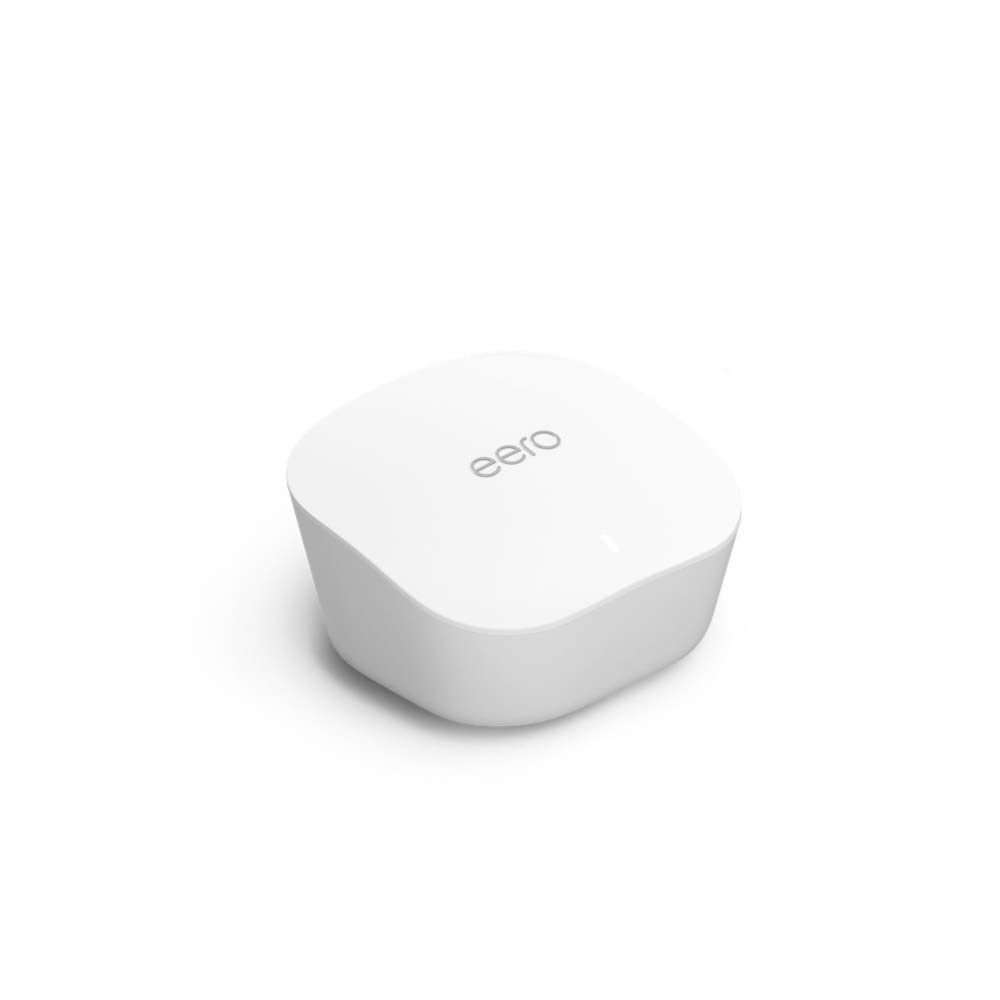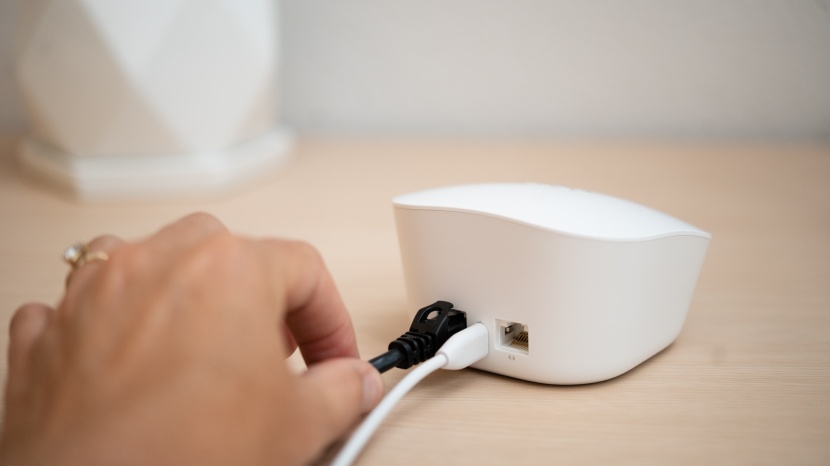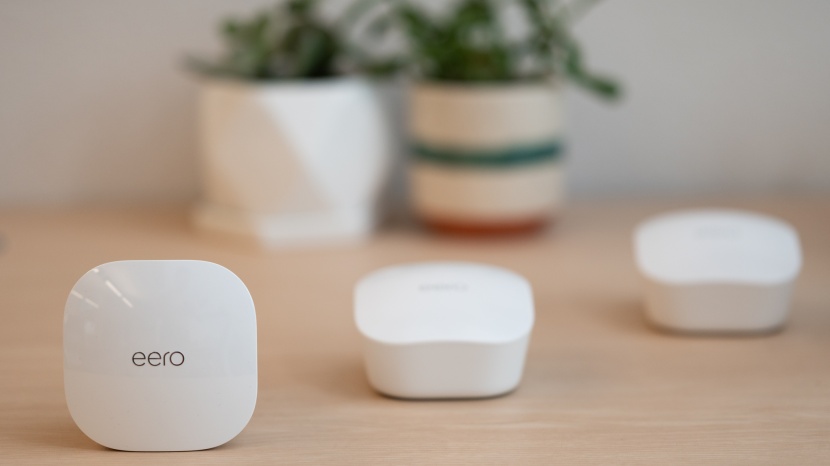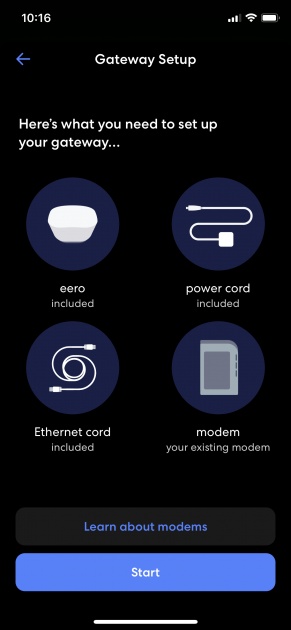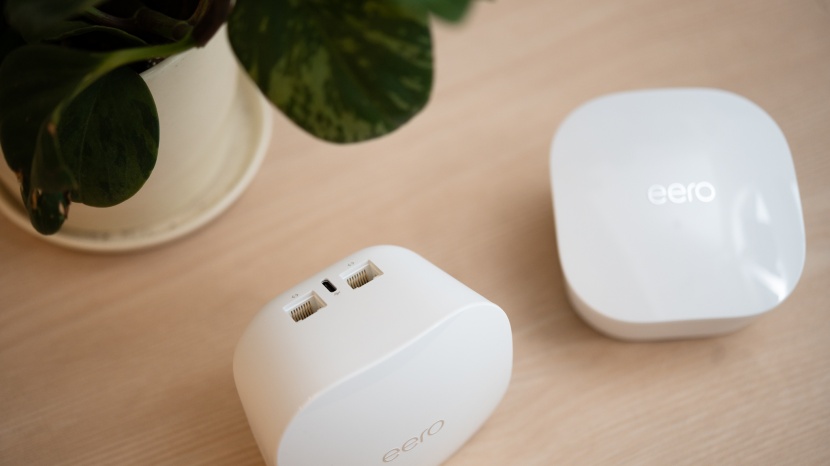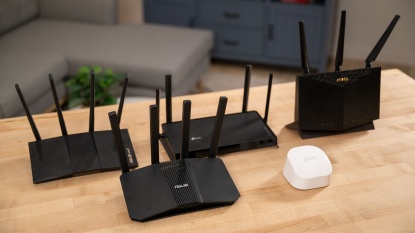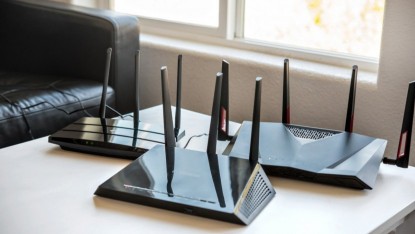eero Mesh WiFi Router Review

Our Verdict
Our Analysis and Test Results
If you want the extended coverage area of a mesh network but are intimidated by the technical aspects of setting it up, then the eero is a great option. The hardware is simple to set up, and there is a handy companion app that guides you through a hopefully problem-free install.
Features
One of the first things we looked at when it came to rating and ranking these WiFi routers is looking at all the different features and functions each has. In our minds, the eero did decently well, performing average.
Right off the bat, we liked that this wireless router is a great option if you have lots of devices on your network, as it is 2x2 MU-MIMO-capable. This creates two separate queues for devices to access the router, lessening the time each one has to wait for data transfer. The eero also is capable of beamforming for even better signal strength, allowing it to focus the network on optimizing performance in the locations you need it most, rather than just emitting equal strength omnidirectionally.
However, it doesn't give you the option of turning on and off the indicator LEDs or a button to run on and off the wireless network. You can reset it remotely through the app or delete your entire network.
We also found that the eero is a little limited in physical connections. It doesn't have any USB port, and each node only has 2 LAN ports, with one of those occupied by the WAN connection for the modem on the primary node.
Ease of Use
Next, we looked at how convenient and user-friendly each wireless router is for our next metric. We awarded points based on the amount of work it took to get each router set up out of the box, how user-friendly, if there are parental controls that you can enable, and if the router has Quality of Service (QoS). We didn't find the eero to be incredibly easy to use, scoring behind many other routers, but it still did alright.
While the eero might not have done exceptionally well in this metric overall, we were impressed with how easy it is to set up — as long as you have a mobile device that can download the app. This model isn't a plug-and-play option, like many of the other WiFi routers, but the mobile app does guide you smoothly through the setup process.
It walks you through which wires to plug in and then sets up the SSID and password for the overall network. After you have the primary node configured correctly, you have the option to add additional nodes for the mesh network, with the app showing you the best layout practices and what else you need to do. We also had to update the eero's firmware before starting any of this.
While the app does make it easy to set up the eero, we did find the app is not the easiest to use. It has many different options and features, so we found it to be a little cluttered and easy to miss things until we got used to it.
The app does give you some options for parental controls, though they don't allow for a ton of finesse. It's easy to use, as you can set large blanket filters for content like adult, illegal, criminal, or violent, but we couldn't find a way to block specific sites. The eero also does not have a typical QoS, having a Smart Queue Management (SQM). This system is still in beta mode when we tested the eero but does give you the option to optimize for gaming or conferencing.
2.4 GHz. Throughput
Our next round of tests rated and compared the data transfer capabilities of each product on both the 2.4 GHz. and 5 GHz. bands, with the testing procedure being the same for both metrics. We used the iPerf3 software to get an average throughput transfer rate from 3 different trials at three different distances between the test laptop and the eero.
We did a short distance test with 8-10 feet between, a medium distance test with about 35 feet separating them, and a long-distance test with around 70 feet. Additionally, we did a line-of-sight test and an obstructed test at short and medium distances, with multiple walls between the router and the computer in the obstructed test. The eero delivered a solid set of results, holding its own with some of the top routers of the group.
The eero had an average throughput of 39 Mbit/s in the short distance line of sight test and — somewhat surprisingly — did a bit better with the blocked test, averaging 53 Mbits/s.
For the medium distance test, we got an average throughput of 47 Mbits/s in the unobstructed test.
This throughput speed only dropped to 43 Mbit/s in the test with interference, which doesn't seem like much of a difference but is a substantial drop compared to the rest of the group.
Unfortunately, the throughput for this router plummeted quite dramatically when we got some distance between the router and the laptop. We got a mere average throughput of 5.7 Mbit/s at a distance of 70', with quite a few walls in between.
5 GHz. Throughput
Moving on to the 5 GHz. band for testing, we found the overall performance of the eero dropped slightly, performing relatively below average.
This wireless router averaged a throughput of 203 Mbits/s in the short distance, line of sight test, which is average.
However, this speed did drop to 174 Mbits/s when some interference was in place, which was a bit below average.
This product did fairly poorly in our medium distance test, only getting an average throughput of 176 Mbits/s in the line of sight test.
However, it did better in the medium distance with interference, getting an average data throughput rate of 188 Mbits/s.
This router finished out with an alright showing in the long-distance test, with our test software recording an average of 21 Mbit/s of throughput.
Range
Our last round of tests looked at each of these routers' effective ranges. As the eero is a mesh system, we only scored the range of a single node to make a more comparable comparison to other products. This product didn't do exceptionally well, having a slightly below-average range in our test.
We used the same test computer to see how far from the router we could get and have the same video stream without buffering. The eero maxed out at a distance of 135' before the video started buffering, with the best routers making it over 200'.
Should You Buy the eero Mesh WiFi Router?
The eero is a solid mesh network system that can get you going without breaking the bank and offered decent performance in most of our tests, doing particularly well when it came to being easy to set up. If you want to set up a mesh network on a budget, we think the eero is a great option. It's nice that you can build up to a full network by purchasing additional units, and you save some money if you buy three in a bundle pack.
What Other WiFi Routers Should You Consider?
Although the eero Mesh is a budget-friendly option for a mesh network router, the award-winning NetGear Orbi WiFi System (RBK50) is the best option available on the market. The eero router — as a single unit — is severely lacking in terms of range. If you don't need a mesh network and simply are looking to improve your WiFi range, the NetGear AC1750 (R6400) offers top-notch capabilities.


